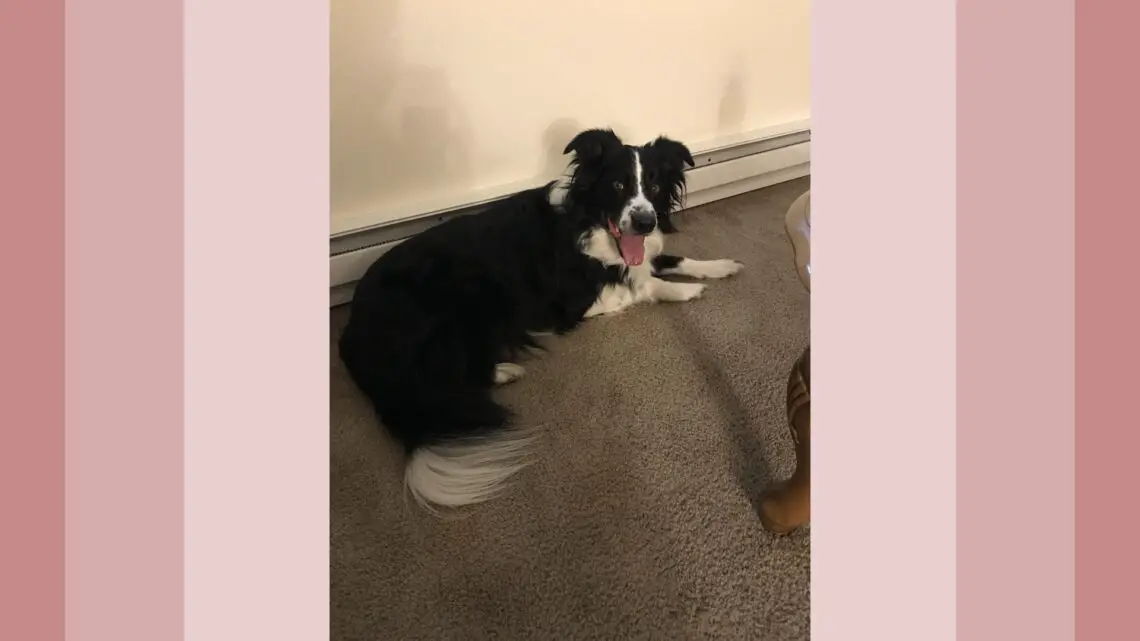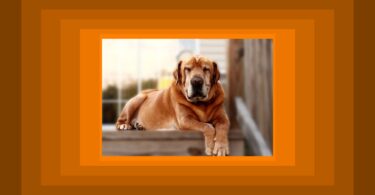Keywords
Canine astraphobia, noise sensitivity, homeopathic therapy, case report.
Introduction
Anxieties and behavioural problems in dogs can decrease their quality of life (Salonen et al., 2020), rendering them more vulnerable to disease and shortening their lifespan (Dreschel, 2010).
Behaviour has a major genetic component (Ilska et al., 2017). Behavioural traits are complex and affected by intricate interactions between genes and environmental factors (Overall et al., 2014), with some genomic areas and loci associated with fear and noise sensitivity (Sarviaho et a., 2019).
Noise sensitivity is the most common anxiety-related trait in dogs (Salonen et al., 2020), with an estimated prevalence of between 20% and 50% (Tiira et al., 2016).
Typically noise sensitivity is generalised and displayed toward several different noises (Blackwell et al., 2013). Fear of fireworks is the most common sub trait with a prevalence of 26%, followed by fear of thunder at 16% (Salonen et al., 2020).
Case report
Matilda, an 11-year- old border collie.
Initial consultation
01 December 2021.
Main complaint
Canine astraphobia.
Background
Matilda has had three litters, and lives happily with her owner and two other border collies, one of which is her five-year-old daughter who she continues to mother.
From eight weeks of age Matilda becomes frenzied from loud noises including fireworks, hard rain on the roof, and vehicle backfire, but particularly during thunderstorms when she attempts to break out of the house any way possible, scratching at doors, destroying window coverings, damaging the house and herself in the process.
At age eight Matilda escaped from an impossibly closed metal dog crate where she was placed in anticipation of an oncoming thunderstorm when her owner had to leave for work, destroying three-day old cruciate ligament surgical repair, ruining her mouth, leaving so much blood the house resembled a murder scene, and digging out under the fence only to become trapped in the neighbour’s swimming pool gate, and subsequently rescued.
Matilda’s owner has ‘tried everything’ to help her including a thunder jacket, playing thunder audio to desensitize her ‘but she’d freak out’, Valium – which her vet guaranteed to work – ‘turned her crazy’ making her owner want to take it herself! A proprietary zeolite liquid helped to calm her down, but this is expensive and has run out, and not been administered for a few months.
Salonen et al., (2020) found one quarter of the border collies in their study showed fear of thunder, which they also suggest becomes prevalent, at 35%, in females of all breeds aged over ten years.
Presently
Matilda knows a thunderstorm is coming well before the clouds gather, becoming increasingly terrified, panting, shaking, and ultimately trying to dig her way through the carpet, the bed, the floor, the couch, attempting to escape through anything including windows, and to smash her way out of the doors.
It is impossible to calm her down, talking to her, holding and loving her, and lying with her has no effect at all as Matilda tries to dig through her owner, and will run right past her to get out the door.
This is ‘horrendously sad’ for the whole family, but particularly Matilda who historically if she succeeded in escaping would always run to the same friend’s house, even though she has love and safety and company in her own home. When they moved, her owner was constantly terrified she’d escape and run and run, and never be found – sadly a common occurrence in the outback.
Table 1: Repertorisation of symptoms 01 December 2021
| Mental / Emotional | Physical | Generalities |
| Mind fear thunderstorm, of | Respiration accelerated | Weather windy & stormy |
| MIND ESCAPE attempts to. | Trembling externally fright, from | |
| MIND COMPANY desire for | ||
| MIND FEAR sudden (panic attacks). |
Figure 1: Results based on repertorization of symptoms (table 1)

Vithoulkas Compass (2022)
Prescription
Stramonium 10M – one dose to begin.
Stramonium has tremendously intense and energetic pathology, with states of mania and violence presenting as extreme fear, where the individual is uncontrolled, impulsive, and possessing super human strength, but often without aggression (Morrison, 1993).
Outcome
Shortly after administration of the first dose, in the face of a thunderstorm Matilda knew was coming well before it arrived – even before any clouds had formed, she displayed her usual terror but was panting and shaking in a way her owner hadn’t seen before ‘like she’d run 10kms.’ After a while, even as the storm intensified, her terror, panting, and shaking subsided drastically, and although still present Matilda stayed right by her owner’s side for the first time in her life without a frenzied desire to escape.
Intensification of symptoms for a few hours followed by rapid amelioration is an excellent reaction, indicating a good state of overall health, and proving the remedy is correct through its ability to elicit that strong initial response (Vithoulkas, 2017).
Table 2: Occurrence and Outcome. 20 Oct. 2021 – 28 Apr. 2022.
| Date | Occurrence | Dose (at owners’ discretion) |
Outcome |
| 20.12.2021 | Heard thunder, began to pant and shake. | Stramonium 10M | Symptoms subsided to 1% of typical. |
| 03.01.2022 | Wide eyed at incoming thunderstorm. | Stramonium 10M | Calmed, lay beside owner no panting, shaking. |
| 28.01.2022 | Looked out the window as a thunderstorm began. | Stramonium 10M | Lay beside owner and was calm. |
| 18.02.2022 | Midnight thunderstorm, jumped up on to owner’s bed. | Stramonium 10M | Back to sleep in 10 minutes beside the bed. |
| 03.03.2022 | Thunderstorm as owner was leaving for work. | Stramonium 10M | Calm when owner returned, no damage to Matilda or the house. |
| 28.04.2022 | Heavy rain, began to pant. | No dose required. | Ventured outside and lay on veranda, calm. |
Discussion
According to allopathic veterinary practice, canine astraphobia can only be mitigated. Behaviour modification, desensitization, medications, or a combination of these treatments, coupled with preparation, perseverance, and patience are encouraged to ‘help dogs to feel safe instead of scared’ (Strommen, 2022).
The use of and interest in veterinary complementary medicine is increasing internationally, with a 2022 survey finding 85.4% of German veterinarian respondents implement complementary medicine in their practice, homeopathy being the most utilized, with 44.3% practicing classical homeopathy (Stanossek and Wehrend, 2022).
Homeopathy, a hotly debated but often used personalized therapeutic medical intervention, has been shown to alleviate stress responses in pigs (Dang and Kim, 2021). Frequently used by human anxiety sufferers (Pilkington et al., 2006) homeopathy shows possible benefit in psychiatric complaints (Davidson et al., 2011) such as anxiety disorders (Hock and Juckel, 2018; Parewa et al., 2021), and as a side note, meta-analysis identified greater efficacy for homeopathy over fluoxetine in major depressive disorder (Rotella et al., 2020).
Conclusion
Thunderstorms were a lifelong trauma for Matilda and her owner who ‘got no sleep on stormy nights with a freaking out dog digging through anything,’ and who sometimes slept in the car, the only place of calm, after driving Matilda around and around.
Homeopathy can improve quality of life (Frass et al., 2020, Witt et al., 2008, Bell et al., 2004) which in Matilda’s case has had significant flow on effects to her owner. Small animal veterinary studies are required to assess the efficacy of homeopathy in canine astraphobia.
References
Bell IR, Lewis DA 2nd, Brooks AJ, Schwartz GE, Lewis SE, Walsh BT, Baldwin CM. 2004. Improved clinical status in fibromyalgia patients treated with individualized homeopathic remedies versus placebo. Rheumatology (Oxford) [online]. May;43(5):577-82. Available from https://pubmed.ncbi.nlm.nih.gov/14734789/
Blackwell, E. J., Bradshaw, J. W. S. & Casey, R. A. 2013. Fear responses to noises in domestic dogs: Prevalence, risk factors and co-occurrence with other fear related behaviour. Applied Animal Behaviour Science [online]. 145, 15–25. Available from: https://www.sciencedirect.com/science/article/abs/pii/S016815911200367X
Dang X, Kim IH. 2021. The effects of road transportation with or without homeopathic remedy supplementation on growth performance, apparent nutrient digestibility, fecal microbiota, and serum cortisol and superoxide dismutase levels in growing pigs. Journal of Animal Science [online]. Apr 1;99(4):skab077. Available from https://academic.oup.com/jas/article-abstract/99/4/skab077/6162474?redirectedFrom=fulltext
Davidson JR, Crawford C, Ives JA, Jonas WB. 2011. Homeopathic treatments in psychiatry: a systematic review of randomized placebo-controlled studies. Journal of Clinical Psychiatry [online]. Jun;72(6):795-805. Available from https://pubmed.ncbi.nlm.nih.gov/21733480/
Dreschel, N. A. 2010. The effects of fear and anxiety on health and lifespan in pet dogs. Applied Animal Behaviour Science [online]. 125, 157–162 (2010). Available from: https://www.sciencedirect.com/science/article/abs/pii/S0168159110001243
Frass M, Lechleitner P, Gründling C, et al. 2020. Homeopathic Treatment as an Add-On Therapy May Improve QOL and Prolong Survival in Patients with Non-Small Cell Lung Cancer: A Prospective, Randomized, Placebo-Controlled, Double-Blind, Three-Arm, Multicenter Study. Oncologist [online]. Dec;25(12):e1930-e1955. Available from: https://pubmed.ncbi.nlm.nih.gov/33010094/
Hock N, Juckel G. Homöopathie bei psychiatrischen Patienten – Für und Wider [Homeopathy for psychiatric patients-for and against]. Der Nervenarzt [online]. Sep;89(9):1014-1019. Available from: https://pubmed.ncbi.nlm.nih.gov/29858643/
Ilska, J. et al. 2017. Genetic Characterization of Dog Personality Traits. Genetics [online]. 206, 1101–1111. Available from: https://pubmed.ncbi.nlm.nih.gov/28396505/
Morrison, R. 1993. Desktop Guide to Keynotes and Confirmatory Symptoms. Grass Valley. Hahnemann Clinic Publishing.
Overall, K. L., Tiira, K., Broach, D. & Bryant, D. 2014. Genetics and behaviour: A guide for practitioners. The Veterinary Clinics of North America – Small Animal Practice [online]. 44, 483–505. Available from: https://pubmed.ncbi.nlm.nih.gov/24766696/
Parewa M, Burman AS, Brahma A, Rutten L, Sadhukhan S, Misra P, Gupta B, Saklani N, Michael J, Basu A, Ali SS, Koley M, Saha S. 2021. Individualized Homeopathic Medicines in the Treatment of Generalized Anxiety Disorder: A Double-Blind, Randomized, Placebo-Controlled, Pilot Trial. Complementary Medicine Research [online]. Mar 4:1-11. Available from https://pubmed.ncbi.nlm.nih.gov/33662951/
Pilkington K, Kirkwood G, Rampes H, Fisher P, Richardson J. 2006. Homeopathy for anxiety and anxiety disorders: a systematic review of the research. Homeopathy [online]. Jul;95(3):151-62. Available from https://pubmed.ncbi.nlm.nih.gov/27397586/
Rotella F, Cassioli E, Falone A, Ricca V, Mannucci E. 2020. Homeopathic Remedies in Psychiatric Disorders: A Meta-analysis of Randomized Controlled Trials. Journal of Clinical Psychopharmacology [online]. May/Jun;40(3):269-275. Available from: https://pubmed.ncbi.nlm.nih.gov/32332462/
Salonen, M., Sulkama, S., Mikkola, S. et al. 2020. Prevalence, comorbidity, and breed differences in canine anxiety in 13,700 Finnish pet dogs. Scientific Reports [online]. 10, 2962. Available from: https://pubmed.ncbi.nlm.nih.gov/32139728/
Sarviaho, R. et al. 2019. Two novel genomic regions associated with fearfulness in dogs overlap human neuropsychiatric loci. Translational Psychiatry [online]. 9, 18. Available from: https://pubmed.ncbi.nlm.nih.gov/30655508/
Stanossek I, Wehrend A. 2022. Application of veterinary naturopathy and complementary medicine in small animal medicine-A survey among German veterinary practitioners. PLoS One [online]. Feb 28;17(2):e0264022. Available from: https://www.ncbi.nlm.nih.gov/pmc/articles/PMC8884514/
Strommen L. 2022. Canine Storm Anxiety. Scottsdale, Arizona [online]. Available from: https://www.pethealthrx.net/canine-storm-anxiety/
Tiira, K., Sulkama, S. & Lohi, H. 2016. Prevalence, comorbidity, and behavioural variation in canine anxiety. Journal of Veterinary Behaviour. Clinical Applied Research [online]. 16, 36–44. Available from: https://www.sciencedirect.com/science/article/pii/S1558787816300569
Vithoulkas Compass, 2022. Vithoulkas Compass Homeopathy Software [computer program]. Greece.
Vithoulkas, G. 2017. Levels of Health, The second volume of the Science of Homeopathy, revised edition. Alonissos: International Academy of Classical Homeopathy.
Witt CM, Lüdtke R, Mengler N, Willich SN. 2008. How healthy are chronically ill patients after eight years of homeopathic treatment?–Results from a long-term observational study. BMC Public Health [online]. Dec 17;8:413. Available from: https://www.ncbi.nlm.nih.gov/pmc/articles/PMC2630323/
Sarah Penrose is an Australasian homeopath, and can be contacted at: https://www.goodhealthforgreatlife.com/






